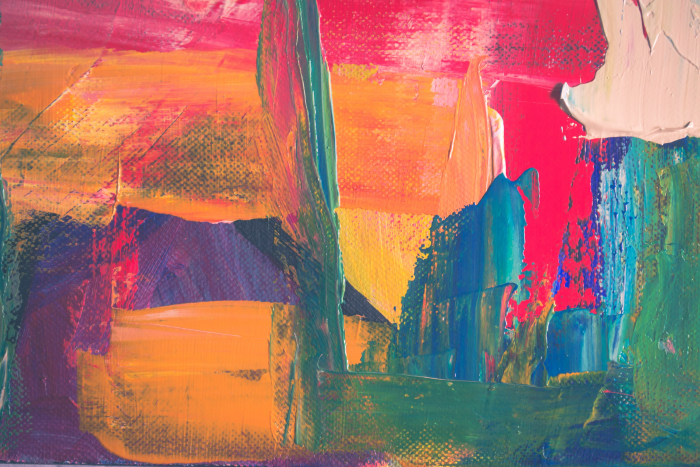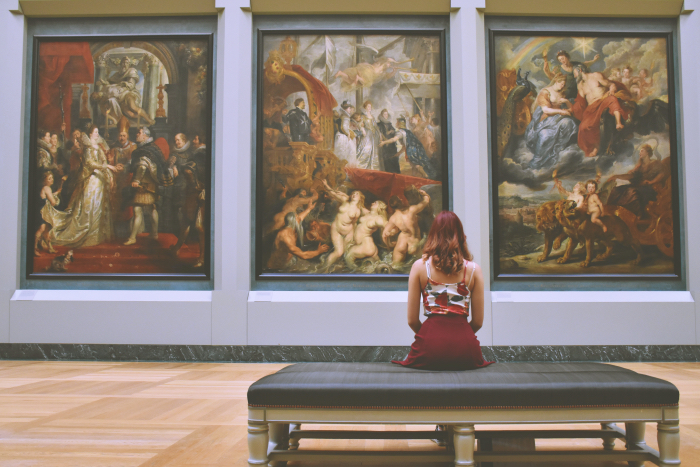
USEFUL RESEARCH IN ART TO READ FOR BEGINNERS
Learning about the arts significantly expands outlook and enriches life experience. This subject promotes creativity and encourages self-expression. Besides, psychologists say that it helps to build a sense of individual identity. What’s more, art is believed to release the pressures of everyday life and improve well-being. It also develops critical thinking and enhances the ability to interpret the world around us.
Now that you realize how beneficial art is, you are probably wondering how to immerse yourself in it. Below, you can find the best books that are worth reading for beginners.
Art to Read for Beginners
“50 Artists You Should Know” by Thomas Koester and Lars Roeper
This book profiles 50 outstanding artists throughout history arranged in a chronological order, starting from the Gothic period. They belong to various artistic movements, so you can get a comprehensive understanding of the evolution of visual arts. The collection is not just useful for beginners but also very attractive and entertaining. The information is presented in an eye-catching format that features beautiful reproductions, short biographies and critical analyses of the artworks. If you come across unfamiliar terms, you can check a glossary of important terms offered in the book. 50 Artists You Should Know can give you a very practical lesson that you’ll enjoy.
“Art Through the Ages” by Helen Gardner
Since 1926, almost two million copies of this book have been sold. Art Through the Ages is a great source of information for those interested in understanding art in context. It chronicles different forms of art from the earliest cave paintings to postmodern architecture. The book tells about the most remarkable artists, works, and styles in history. This invaluable piece of writing not only surveys Western art from prehistory to the present but also provides overviews of notable areas of non-Western art.
“The Story of Art” by Professor E.H. Gombrich
This popular work has been one of the best-selling books in the field for over four decades. Gombrich wrote it for “newcomers to art,” so the book is very easy-to-read. Simple and clear writing attracts a lot of people who have just started exploring the world of art. The Story of Art features everything you need to get a basic understanding of art history’s timeline. It’s not only quite informative but also wonderfully designed with illustration. Most importantly, this famous work reflects the author’s deep love of the subject.
If you want to dig deeper into research, you have a few options to try. First of all, you can turn to assignment writers with relevant background and ask them to write a brief paper on a certain topic for you. Experts from essay services can share their knowledge in simple words, so you’ll have a better understanding of those aspects of art you are interested in. The second option to learn more about art research is exploring the existing literature. Typically, it’s pretty difficult to read. However, you can consider the following works for beginners.
“Artistic Research: Charting a Field in Expansion“ by Paulo de Assis, Lucia D’Errico
This book explains how research has become a part of the modern art world. Basically, it’s an overview of various discourses and practices, exploring groundbreaking questions. Artistic Research: Charting a Field in Expansion consists of reports demonstrating the ways of research in practice. It also shows how the flag of avant-garde has been taken by the artists in recent years. The book answers the questions like ‘What is art-as-research?’, ‘Can something subjective become really objective?’ and ‘What is the relation between art and writing?’
“Method Meets Art” by Patricia Leavy
This work serves as a method book to experienced researchers that want to synthesize their artistic and research interests. But it would also be a great choice for students who seek to develop a deep understanding of innovative research practice. After reading Method Meets Art, you’ll see that research can dramatically transform what we think we know about the world. In her book, Leavy gives an updated comprehensive overview of arts with practical variations, research examples and lists of suggested literature. If you wish to explore the merging of the arts, this work is definitely for you.
“How to Make Art at the End of the World“ by Natalie Loveless
This book is a must read for artists and scholars who are drawn to artistically driven methods of researching. The author explores the claim that art-making practices challenge and transform existing knowledge-making practices. Loveless also explains how stories shape the world in politically and sensually attuned modes. How to Make Art at the End of the World will not only give you a deeper understanding of how to do artistic research, but also provide you with an extraordinary perspective.

FINAL THOUGHTS
Art is another way to better understand the world around you. It’s not a problem if you don’t know much about this field because there are a lot of great books created for beginners. If you want to learn some general information about the history of art, you can read Art Through the Ages by Helen Gardner, The Story of Art by Professor E.H. Gombrich and 50 Artists You Should Know by Thomas Koester and Lars Roeper. Once you feel that you are ready for deeper research, check Method Meets Art by Patricia Leavy, Artistic Research: Charting a Field in Expansion by Paulo de Assis and Lucia D’Errico as well as How to Make Art at the End of the World by Natalie Loveless.
AUTHOR’S BIO
Julius Sim is a researcher and art historian. He teaches Arts at one of the top US universities and works at a museum as a tour guide. Julius also writes articles for popular online magazines and publishes his research in science journals.

